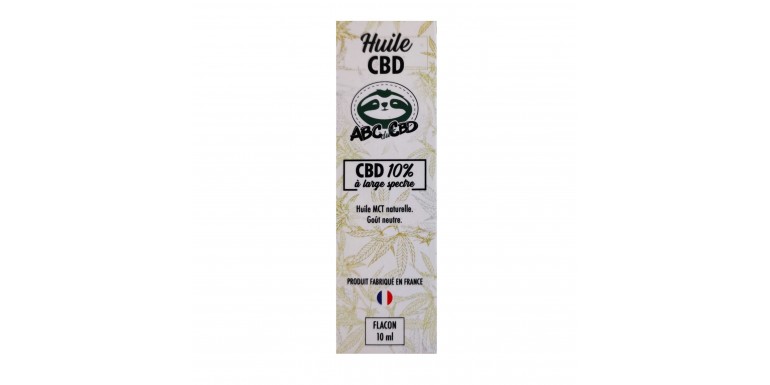
CBD oils
CBD oils are abundant on the market, so it is sometimes complex to find it. What is the difference between hemp oil and CBD oil? Between a complete or wide spectrum oil and an isolat? What methods of manufacturing and administration should be preferred? How to dose? In this article, we will answer all these questions.
The different types of oils: isolat, full or wide spectrum oil We must not confuse CBD oil and hemp oil. The first is usually obtained from hemp flowers while the second is obtained by pressing seeds that do not contain cannabinoids. They contain essential fatty acids and vitamins. The composition of a CBD oil depends on its production and spectrum (the extent of components present in the plant).
A complete spectrum oil will retain all naturally occurring phytocannabinoids and terpenes in the plant, including THC. A broad spectrum oil also, to this close to THC being subtracted. This is an ideal option for consumers who do not want to consume THC but who would like to benefit from “the entourage effect”. The synergy of the different chemical components of the plant has more beneficial effects than its compounds taken in insulation[1].
When the CBD molecule is isolated from the rest of the components, it is called isolates. They are in the form of 99% pure crystals, which are then mixed with vegetable oils or neutral bases. In this case, we speak of oils "enriched in CBD". The isolates having no taste, they are sometimes mixed with terpenes (terpsolat). Neither isolates nor terpsolats can restore the surrounding effect. In addition, beyond a certain dosage, saturated receptors and the effects of the isolated molecule decrease.
In most oils, cannabinoids are decarboxyled during extraction or after. However, there are "gross" spectrum oils obtained by low-temperature extraction methods, which contain non-decarboxylic cannabinoids. As in the living plant, they are present in the form of acids (THCA, CBDA, CBGA). They have specific effects and virtues. For example, THCA is not psychotropic like THC and has anti-inflammatory virtues[2] and neuroprotectives[3].
Extraction methods
The quality of the oil will depend greatly on the extraction method and the manufacturer’s expertise. It is up to the consumer to find out. In general, extraction consists of placing biomass in solvents (alcohol, gas, oil) that polarize the desired components.
To extract cannabinoids, it is simply possible to infuse hemp in vegetable oils (olive or coconut oil)
Method used for CBD ABC oils . These oils will have a short shelf life and it is complicated to control the dosage.
Instead, industry uses the chemical solvent extraction method. It works in two stages: the biomass is placed in a first solvent (generally ethanol, isopropylic alcohol or butane) which is placed in another solvent (oil) even more solvent and then evaporated. The problem of this method is that solvent residues can remain. Some unwanted components may also be extracted (e.g. ethanol polarizes chlorophyll that gives a dark and bitter oil).
In general, the extract must be purified after extraction. Processes exist, such as the wintering of the extract to separate components, but they may destroy certain cannabinoids and the oil will be less good. The cleanest and most effective extraction method is the supercritical extraction to CO2. Transformed to liquid state through pressure, CO2 acts as a neutral solvent and retains the chemical integrity of the molecules. This results in a very pure and concentrated oil.
Consume CBD oil
CBD oil can be presented in different forms. It is up to everyone to decide on its mode of consumption. In general, the oil is contained in a 10ml bottle equipped with a dropper. In sublingual administration, CBD is absorbed by mucous membranes and the effects are almost immediate. Placed on food, drops will delay about 1⁄2 hour to make effect. For the kitchen, food oils enriched with CBD exist.
CBD oil can also be found as soft capsules. These have no taste and cause a slow and strong effect. Some oils are intended for topical application. Finally, e-liquids to CBD are made from extracts to which specific components are added for the vape. It is not necessary to spray CBD oil.
Many individual factors may affect CBD intake. It is therefore advisable to start with low doses. The recommended initial dosage is 0.5 mg per day and per kg, preferably in 3 times during meals. To correctly dose, it is necessary to refer to the CBD concentration of the oil: in a 10 ml pot containing 2% of CBD (200mg), 1 drop equal 1 mg, for 4%, 1 drop equal 2mg, for 6%, 3mg and so on. It is recommended to stay within 200mg per day.
